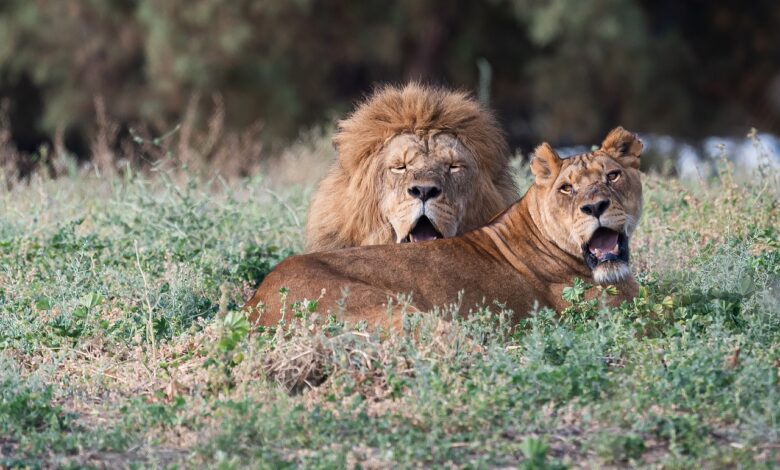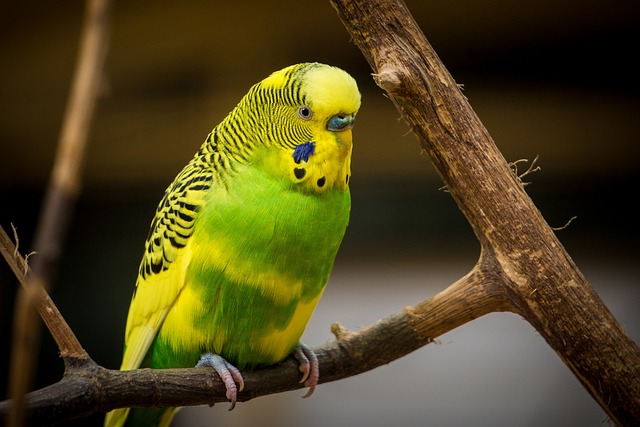Jungle Animals: Exploring the Wonders of the Wild

Jungles are home to a diverse range of animals, from the smallest insects to the largest mammals.
Table of Contents
Introduction
Welcome to the lush green world of the jungle, where nature’s mysteries unfold amidst a cacophony of calls, roars, and chirps. Jungles are vital ecosystems that support a diverse range of plant and animal species, each contributing uniquely to the delicate balance of life.
The Magnificent Beasts of the Jungle
The Fierce Bengal Tiger
One of the most iconic symbols of the jungle, the Bengal Tiger, reigns as the apex predator with its striking orange fur adorned with dark stripes. Stealthy and powerful, this majestic cat represents grace and strength in perfect harmony.
The Graceful Jaguar
Found primarily in the dense Amazon rainforest, the Jaguar stands out with its beautiful golden-yellow coat covered in mesmerizing rosettes. Known for its exceptional hunting skills and adaptability, the Jaguar is a true symbol of resilience.
The Majestic African Elephant
The largest land animal on Earth, the African Elephant, roams the jungles of Africa, displaying intelligence, empathy, and strong familial bonds. Sadly, these gentle giants face numerous threats due to illegal poaching and habitat loss.
The Elusive Clouded Leopard
With its mesmerizing cloud-like markings, the Clouded Leopard is a mysterious and elusive feline dwelling in the dense jungles of Southeast Asia. It is an excellent climber and is often spotted high up in the trees, camouflaging among the leaves.

Exotic Birds and Their Enchanting Calls
The Colorful Scarlet Macaw
Dazzling with its vibrant red, blue, and yellow plumage, the Scarlet Macaw graces the canopy of South American jungles. Its loud and raucous calls add a symphony of colors to the jungle’s natural orchestra.
The Melodious Howler Monkey
Known for its distinctive howls that can be heard from miles away, the Howler Monkey is a social and vocal species that resides in the treetops of Central and South American jungles.
The Dazzling Toucan
With its oversized, colorful bill, the Toucan is one of the most recognizable birds in the jungle. Its bill may seem comical, but it serves essential purposes, such as helping the bird reach fruits on the outer branches.
The Intelligent Orangutan
Sharing nearly 97% of its DNA with humans, the Orangutan is an incredibly intelligent primate found in the jungles of Borneo and Sumatra. Sadly, they face habitat destruction and are critically endangered.
Jungle Reptiles: From Slithering Serpents to Ancient Turtles
The Dangerous King Cobra
As one of the most venomous snakes in the world, the King Cobra commands respect and fear. Its imposing size and deadly venom make it both a marvel and a threat in the jungles of Southeast Asia.
The Stealthy Green Anaconda
Hailing from the Amazon rainforest, the Green Anaconda is the largest snake globally, known for its incredible strength and ability to constrict its prey. Despite its massive size, it is a master of stealth in the water.
The Slow-moving Galápagos Tortoise
Found on the Galápagos Islands, the Galápagos Tortoise is an ancient reptile that can live for over a century. These gentle giants have become a symbol of conservation efforts.
The Vibrant Poison Dart Frog
Donning eye-catching colors, the Poison Dart Frog is tiny but packs a lethal punch. Native to Central and South American jungles, these frogs secrete potent toxins through their skin.

Underwater Wonders: Aquatic Life in Jungle Rivers
The Mighty Hippopotamus
Often associated with African savannas, the Hippopotamus also dwells in the rivers and swamps of jungles. Despite their seemingly docile demeanor, they are among the most dangerous animals on the continent.
The Agile River Otter
Found in various jungles around the world, the River Otter is a playful and skilled swimmer, gliding gracefully through the water in search of fish and crustaceans.
The Fascinating Gharial
Endemic to the Indian subcontinent, the Gharial is a peculiar-looking crocodile with a long, slender snout perfectly adapted for catching fish in jungle rivers.
The Prowling Black Caiman
As the largest member of the alligator family, the Black Caiman stealthily patrols the rivers of South America, using its sharp senses to detect prey.
Intriguing Insects and Arachnids
The Giant Atlas Moth
Boasting a wingspan of up to 12 inches, the Giant Atlas Moth is a wonder to behold. It emerges from its cocoon resembling a beautiful tapestry.
The Deadly Black Widow Spider
Notorious for its venomous bite, the Black Widow Spider resides in dark crevices of jungles, preying on insects that venture too close.
The Illuminating Fireflies
Creating a magical display of light, fireflies add enchantment to the jungle nights. Their bioluminescence serves as a communication tool to find mates.
The Camouflaged Leaf Insect
Masters of disguise, the Leaf Insects perfectly blend into their surroundings, resembling a dried leaf to avoid detection by predators.

Jungle Facts: Unveiling Nature’s Secrets
Biodiversity Hotspots
Jungles are biodiversity hotspots, housing an incredible variety of plants, animals, and microorganisms that play vital roles in the ecosystem’s health and balance.
Survival Strategies of Jungle Animals
Adaptations such as camouflage, mimicry, and hunting techniques have enabled jungle animals to thrive in their challenging environments.
Human Impact on Jungle Ecosystems
Deforestation, illegal poaching, and climate change pose severe threats to the delicate jungle ecosystems, leading to the decline of numerous species.
Conservation Efforts and Challenges
Preserving the biodiversity and ecosystems of jungles requires collective efforts, with organizations and governments working together to protect endangered species and their habitats.
Protecting Endangered Species
Conservation projects play a crucial role in safeguarding endangered animals from extinction, focusing on breeding programs and habitat restoration.
Sustainable Tourism in Jungles
Promoting responsible and sustainable tourism can help generate income for local communities while ensuring minimal impact on the environment.
Balancing Development and Conservation
Finding a balance between development and conservation is essential to protect jungles for future generations while meeting the needs of human populations.
Jungle Adventure: Tips for Exploring Safely
Choosing Responsible Tour Operators
When planning a jungle adventure, opt for tour operators that prioritize wildlife conservation and respect for the natural environment.
Packing Essentials for Jungle Expeditions
From sturdy footwear to insect repellent and sunscreen, packing the right essentials ensures a safe and enjoyable jungle expedition.
Understanding Jungle Safety Measures
Jungles can be challenging environments to navigate. Understanding safety measures and following local guidelines is crucial to prevent accidents and ensure a positive experience.

Conclusion
Embarking on a journey into the heart of the jungle reveals a world teeming with life, diversity, and wonder. From the regal Bengal Tiger to the delicate Firefly, each creature plays a unique role in maintaining the delicate balance of the jungle ecosystem. However, this delicate balance is threatened by human activities, and it is our collective responsibility to safeguard these precious environments and the incredible animals that call them home.
FAQs
Are jungle animals dangerous to humans?
Jungle animals are wild and should be treated with respect and caution. While some can be dangerous, most animals prefer to avoid human interactions.
What is the biggest threat to jungle ecosystems?
Deforestation and habitat loss due to human activities are the most significant threats to jungle ecosystems.
Can you visit jungles responsibly?
Yes, responsible and sustainable tourism practices can help minimize the impact on jungle environments while supporting local communities.
Which jungle animal is the rarest to spot?
The Clouded Leopard is among the most elusive jungle animals, making sightings a rare and special occurrence.
How can I contribute to jungle conservation?
Supporting reputable conservation organizations and spreading awareness about jungle conservation can make a difference.


